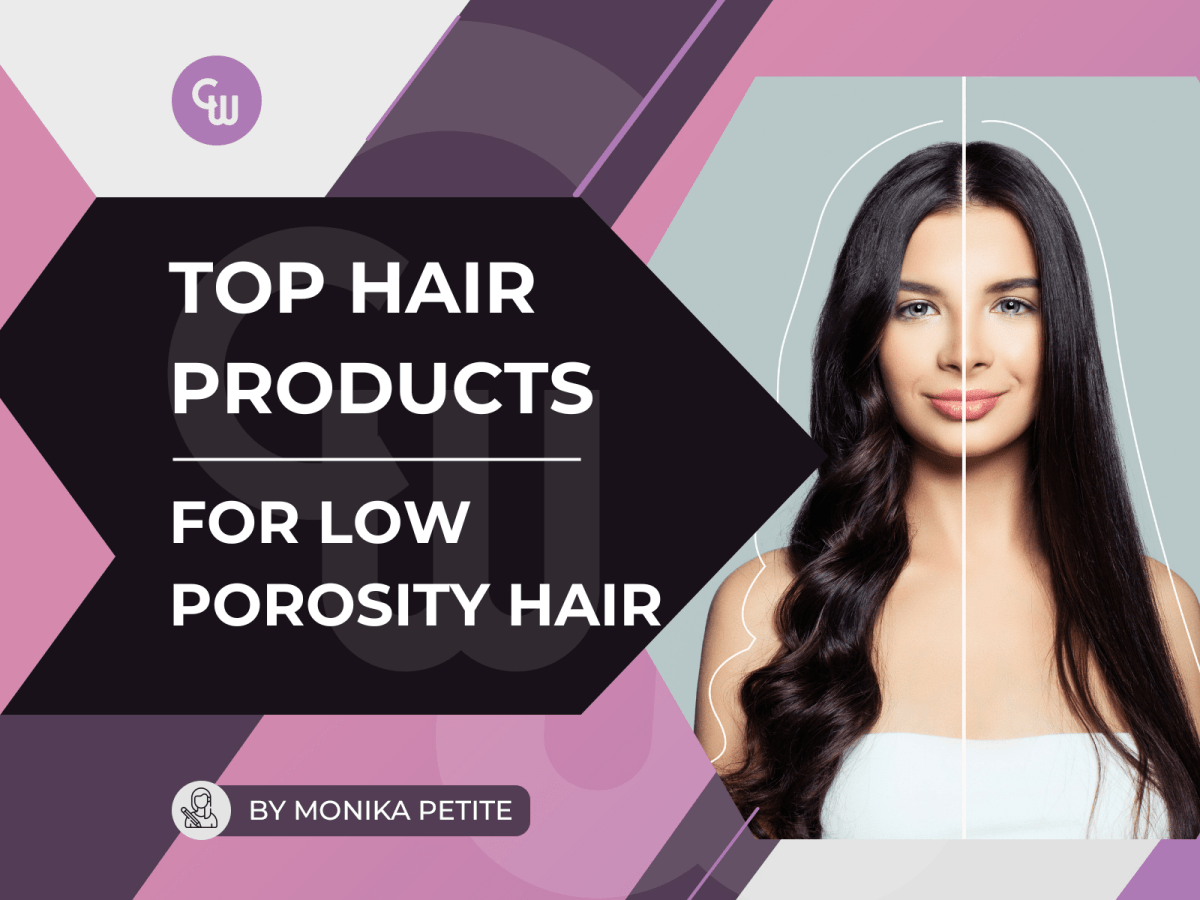Table of Contents
Understanding Low Hair Porosity

Low porosity hair has a tightly closed cuticle layer, which makes it tough for moisture to get in. 💧 Water and hair products often sit on the surface instead of soaking in, leading to dryness and making it tricky to keep your hair hydrated. It’s like trying to water a plant with waxy leaves—the water just rolls off! 🌿 This flat hair cuticle layer makes low-porosity hair a bit of a challenge to hydrate. The closeness of hair cuticles affects the ability to absorb moisture, making it essential to find products that can penetrate this barrier.🌟
Genetics plays a big role in determining your hair's porosity. If your parents have low-porosity hair, there’s a good chance you do too. 👩👧 A simple way to check is by seeing how your hair reacts to water. If the water beads up and rolls off instead of soaking in, you’re probably dealing with low-porosity hair. Another sign is that your hair takes forever to dry after washing. 🕒
Understanding your hair’s porosity is key to creating the right hair care routine. Knowing how your hair absorbs moisture helps you choose the best low-porosity hair products and techniques to keep it healthy and hydrated. 💦
Essential Products for Low Porosity Hair
Picking the right products for low-porosity hair is super important to keep it healthy and moisturized. It’s all about finding stuff that hydrates without making your hair feel heavy. Think of your hair care routine like cooking—using the right ingredients makes all the difference. 🍳
For low-porosity hair, that means going for products that help lock in moisture and keep your hair in great shape. 💧 The right products can also prevent brittle hair, ensuring your hair remains soft and manageable. Using low-porosity hair products is crucial for optimal results, providing a weightless and non-greasy finish.
Here are three must-have products to make your hair care routine a breeze: sulfate-free shampoos, deep conditioners, and lightweight oils. Each of these essentials plays a key role in keeping your hair hydrated and happy. 🌟😊
Sulfate-Free Shampoo
Sulfate-free shampoos are like a hug for your hair! 🧴💖 They clean without stripping away those natural oils that keep your hair moisturized. Regular shampoos with sulfates can leave your hair feeling dry and brittle, but sulfate-free ones offer a gentle cleanse that’s just right for low-porosity hair. 🌟
Using a sulfate-free shampoo helps your hair hold onto its natural oils while still getting rid of dirt, buildup, and greasy residue. 🚿✨
Here are some top picks:
-
Olaplex No.4 Bond Maintenance Shampoo - Strengthens, hydrates, and promotes healthy hair growth. 💪💧
-
Pureology Hydrate Shampoo - Known for its moisturizing and color-protecting properties. 🌈💦
-
DevaCurl No-Poo Original Zero Lather Cleanser - Sulfate-free formula that provides a gentle, non-lathering cleanse perfect for curly hair. 🌿✨
Deep Conditioner

Deep conditioners are a game-changer for your hair routine. 💧✨ They pack in the moisture and hydration that low hair porosity desperately needs. These conditioners get deep into your hair, giving it the moisture it can’t easily soak up on its own. 💦 Regular deep conditioning sessions can turn your hair from dry and brittle to soft and easy to manage. 😊🌟 They are especially important for color-treated hair, helping with moisture retention while enhancing shine. ✨🎨
Here are some expert recommendations:
-
Moroccanoil Moisture Repair Conditioner - Renowned for its ability to restore moisture and repair damaged hair. 💧🌿
-
Olaplex No. 5 Bond Maintenance Conditioner - Perfect for strengthening and hydrating your locks. 💪💦
-
Kevin Murphy ANGEL.RINSE Restorative Conditioner - Known for its lightweight, restorative properties, making it ideal for fine, colored hair. ✨
Lightweight Oil

Lightweight oils, like jojoba and grapeseed, are awesome for low-porosity hair because they soak in easily without leaving your hair feeling greasy. 🌿✨ These oils get into your hair better than heavier ones, giving it the moisture it needs without weighing it down. 💧
Grapeseed oil, for example, is a lighter option that adds shine and nourishment without causing buildup. 🌟
Coconut oil is another excellent choice, known for its moisturizing properties that nourish and condition strands, preventing dryness and improving scalp health.🌸
How to Use Hair Products Effectively

Using the right products is just one piece of the puzzle; how you apply them is just as crucial. Nailing the application techniques can help you get the most out of your hair products for low-porosity hair. Here’s how to make each treatment count:
-
Applying Heat
A little bit of heat can go a long way in helping your hair soak up moisture. Try using a heat cap or wrapping your head in a warm towel while deep conditioning. This trick can make a big difference in how well your hair holds onto moisture. Additionally, heat helps products penetrate the hair follicles, optimizing hair health. 🌡️🔥
-
Layering Techniques
Start with water-based products to hydrate, then follow up with oils and creams to seal it all in. Proper layering is key to keeping your hair soft and manageable. Layering also helps the hair shaft retain moisture, enhancing the effectiveness of your hair care routine. 💧🧴
-
Avoiding Product Buildup
Low-porosity hair can easily get bogged down with product buildup, which makes it harder for moisture to get in. Stick to lightweight products and don’t overdo it. Using a clarifying shampoo now and then can help keep your hair clean and your products working their best. Buildup affects hair strands, making them less responsive to treatments. 🧼✨
Recommended Ingredients for Low-Porosity Hair

For low-porosity hair, certain ingredients can make a world of difference. Emollient-rich goodies like shea butter and jojoba oil are especially awesome. These ingredients help keep moisture levels in check and give your hair the nutrients it needs to stay healthy and elastic. 💪✨
Here are some key ingredients to include in your hair care routine:
Aloe vera’s high water content makes it an amazing natural hydrator for low-porosity hair. It deeply hydrates and boosts moisture absorption, so look for products with aloe vera listed as a main ingredient to boost your hair's hydration. 🌟
Packed with vitamins A and E, shea butter is a game-changer for low-porosity hair. It helps lock in moisture and provides nutrients to improve elasticity and reduce breakage. Whether in raw form or as part of a shea butter cream, it’s a must-have for keeping your hair healthy and hydrated. 💧💖
-
Protein Treatments 💪
Protein treatments are key for strengthening low-porosity hair and reducing brittleness. They reinforce the hair structure, minimizing breakage and keeping your hair strong. Just be careful not to overdo it with the protein, as too much can make your hair feel stiff and dry. 🚫💦
Tea tree oil is excellent for addressing issues like dry scalp and itchiness. Its moisturizing properties help cleanse the scalp while maintaining hair health, making it particularly beneficial for individuals with low-porosity hair. 🌟
Styling Tips for Low-Porosity Hair

Styling low-porosity hair can be a bit of a puzzle, but with the right tricks, you can keep it healthy and absolutely amazing. Focus on methods that lock in moisture and prevent damage. 🌟
-
Protective Styles
Twists, braid-outs, and Bantu knots are awesome for low-porosity hair. These styles help keep your hair hydrated by protecting it from the elements and reducing friction. Protective styles are especially beneficial for natural hair, as they help maintain moisture and manageability.💧✨
-
Avoiding Damage
Try to go easy on the heat-styling tools and chemical treatments to avoid damage. When you need heat, always apply a heat protectant to keep your hair safe and healthy. All hair types can benefit from reduced heat styling, as it helps retain hydration and manage frizz. 🔥💖
-
Using Leave-In Conditioners
Leave-in conditioners are a game-changer for low hair porosity, keeping it soft and manageable all day long. Opt for a lightweight formula to ensure your hair stays hydrated and looks fabulous throughout the day. 💦😊
Here are some of the best leave-in conditioner:
-
Schwarzkopf BC Bonacure Hyaluronic Moisture Kick Spray Conditioner - Provides instant hydration and detangling benefits. 🌟💧
-
Olaplex No.6 Bond Smoother Leave-in Styling Crème - Strengthens and moisturizes while reducing frizz and flyaways. 💪✨
-
Revlon Equave Hydro Nutritive Detangling Conditioner - Offers lightweight moisture and easy detangling, perfect for daily use. 💧😊
Common Mistakes to Avoid

Avoiding common mistakes is key to keeping low-porosity hair happy and healthy. Here are a few things to watch out for:
-
Overloading with Heavy Products
Heavy products can make your hair feel weighed down and greasy. Stick to lightweight goodies to keep your hair feeling fresh and bouncy. ✨ Additionally, heavy products can hinder your hair's ability to absorb moisture, making it less effective in retaining hydration.
-
Skipping Clarifying Shampoo
Clarifying shampoos are a must to get rid of all that product buildup. Skipping it can leave your hair feeling gunky and make it hard for moisture to get in. Regular washes keep your hair clean and help your products work their magic. 🧼✨
-
Ignoring Scalp Health
Don’t forget about your scalp! A healthy scalp is the foundation for great hair. Neglecting it can slow down hair growth and mess with your follicles. Keep it clean and happy to maintain your low-porosity hair. 🌟😊
Summary
Caring for low-porosity hair means recognizing its unique traits and selecting the right products and techniques to promote hair growth. Opt for sulfate-free shampoos, deep conditioners, and lightweight oils, and use them properly to keep hair hydrated and healthy. Avoid pitfalls like using heavy products and skipping clarifying shampoos to maintain optimal hair health. Embrace your low-porosity hair and enjoy the path to healthier, more manageable locks!
Frequently Asked Questions
How can I tell if I have low hair porosity?
If water beads up and rolls off your hair instead of soaking in, you might have low-porosity hair. Try the water test to find out for sure!
What kind of shampoo should I use for low-porosity hair?
For low-porosity hair, choose a sulfate-free shampoo that cleanses gently without stripping natural oils. This helps keep your hair healthy and moisturized!
Why is my hair always dry even after applying products?
If your hair feels dry even after applying products, it might have low porosity, meaning it has trouble absorbing moisture. Try using a little heat while conditioning and applying products on damp hair to help lock in moisture.
Are heavy oils bad for low-porosity hair?
Heavy oils can weigh down low-porosity hair and lead to buildup. Stick with a lightweight hair oil like jojoba or grapeseed for better results!
How often should I use a clarifying shampoo?
Use a clarifying shampoo at least once a month to prevent product buildup and improve moisture absorption. Your hair will appreciate it!






